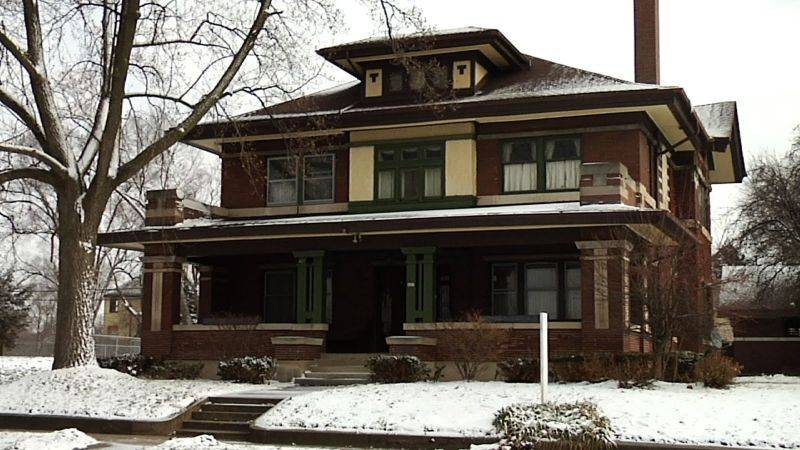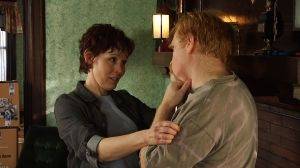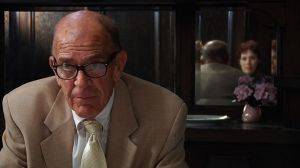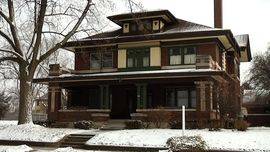
When I was a kid, I was sort of obsessed with Vincent Price movies. I still remember my glee on Fridays when WAND-TV had a midnight show featuring favorites like The Pit and the Pendulum and The Fall of the House of Usher. Both featured a haunted castle with a twisted past told to the audience through convoluted narration, a tormented owner on the verge of madness (frequently with mild sexual hang-ups), and lots of extra-tormented victims locked in the convenient torture chamber (down by the rumpus room) that our hero must rescue before the villainous house and its possessing entity devour their souls. It was naughty, nail-biting fun for a pre-teen boy after midnight, and the location of each film was as much of a character as any portrayed by the actors in those creaky black-and-white classics.
A little-known fact about the CU arts scene (getting less “little-known” all the time) is that we have an active film community cranking out several films a year. These films are labors of love for all involved, and the donated costumes, locations, and actor and technician hours are a unique offering to our community which we rarely experience in the local Cineplex. Enter our hero, The Art Theater Co-op, which has hosted screenings for local movies like the recent queer comedy Scary Normal and various others.
 This past Sunday afternoon hosted the world premiere of the locally produced suspense/gothic yarn House of Thaddeus. Written and produced by Mike Boedicker and Bill Kephart, the film is set in a lush three-story manse in Danville (or DeeVille, according to the faux books about the house’s fictional twisted past). The historyunfolds as Claire and Tom, an unsuspecting couple portrayed by Joi Hoffsommer and Bill Kephart (pictured together, right), purchase the grossly underpriced property from the shady descendant of its previous owner. (WARNING: Underpriced real estate in this type of film is often a red flag for mayhem and demonic possession. Let the buyer beware!) They soon learn the house was once the site of a grisly crime and previously housed a fertility cult with a polygamous leader, named Thaddeus, who installed odd little red-eyed wall sconces to “watch” future inhabitants long after he had shuffled off this mortal coil. And yet they stay…because the house is the one Claire “has always dreamt of living in.” What unfolded is an engaging gothic tale with a lot of ambiguity in its conclusion and some niftily spooky atmosphere and performances. The house is indeed a major presence and bears some scars from the previous inhabitants’ hijinx. It is majestic and imposing and creepily out-of-date for the most part, the perfect setting in which to lose one’s mind.
This past Sunday afternoon hosted the world premiere of the locally produced suspense/gothic yarn House of Thaddeus. Written and produced by Mike Boedicker and Bill Kephart, the film is set in a lush three-story manse in Danville (or DeeVille, according to the faux books about the house’s fictional twisted past). The historyunfolds as Claire and Tom, an unsuspecting couple portrayed by Joi Hoffsommer and Bill Kephart (pictured together, right), purchase the grossly underpriced property from the shady descendant of its previous owner. (WARNING: Underpriced real estate in this type of film is often a red flag for mayhem and demonic possession. Let the buyer beware!) They soon learn the house was once the site of a grisly crime and previously housed a fertility cult with a polygamous leader, named Thaddeus, who installed odd little red-eyed wall sconces to “watch” future inhabitants long after he had shuffled off this mortal coil. And yet they stay…because the house is the one Claire “has always dreamt of living in.” What unfolded is an engaging gothic tale with a lot of ambiguity in its conclusion and some niftily spooky atmosphere and performances. The house is indeed a major presence and bears some scars from the previous inhabitants’ hijinx. It is majestic and imposing and creepily out-of-date for the most part, the perfect setting in which to lose one’s mind.

The two most impressive things about this film are the spot-on camera work and the lovely performances by the ensemble of local acting powerhouses. The filming is well-framed and atmospheric throughout, and the images are crisp and steady, an accomplishment many bigger-budgeted indie films might envy. The special effects are limited, yet effective, my favorite being the view of the actors from the red-eyed sconces. Hoffsommer’s work is of its usual high quality; literally, she’s a “joy” to watch as an actress. Her presence is natural and gives us the impression of a woman filling an emptiness with her growing obsession with the house’s history. As herbaffled and concerned spouse, Bill Kephart is effective throughout. He and Hoffsommer have a believable rapport as husband and wife, and his growing concern is believable. The seller of the house is played by the late Gary Gardner (pictured, left) to creepy effect, and there is lovely work by Barbara Evans, as a former cult member coming back to reunite with the old place and lead a séance or two, and by Julia Megan Sullivan as the sole survivor of the aforementioned grisly crime. The rest of the cast is a virtual “who’s who” of local talent; you will almost certainly see your favorite community actors pop up here and there in the large supporting cast. This element of “spot-the-actor” was a lot of fun for all involved in the near-packed screening.
The comparisons to the Price films of my boyhood are apparent in the script. It’s a throwback to a more patient era of storytelling, and the backstory unfolds in patches of long narration, like an old Twilight Zone episode. For the most part, those narratives are handled well, especially in the final moments when Claire’s romanticized vision of the house is thwarted with the grisly reality of the crime that occurred there back in the day. Another old-school element, perhaps, and a very minor quibble, is that those final revelations could have been a bit more graphic, especially when viewed in today’s marketplace. The story itself is not overly complex or convoluted, but it seems a bit sluggish at times, especially when Claire takes off for a Chicago outing that seems to take a bit too long before lighting on Sullivan’s character, Jacy. What seems sluggish and a bit confusing is the time frame of Claire’s descent. An injury sets our time table, but the bandages seem to take a lot longer than eight weeks to come off, and the images of Claire’s prolonged depression could have been edited a bit. Watching someone mope is never juicy or interesting, but things pick up nicely after she begins to research the house’s history. The writing of the role of Tom could be fleshed out a bit, since his reactions seem to come in spurts of caffeinated energy rather than resulting from organic character motivation. Those I was with were divided about the ambiguous ending of the piece; some felt the cult leader’s agenda needed to be more explicitly drawn out. Those quibbles stated, this is a quality film over two years in the making, and it’s a lot of fun for anyone who wants to see what C-U folks can do.








